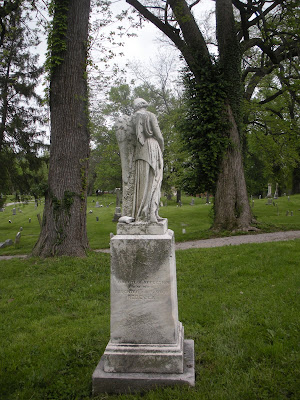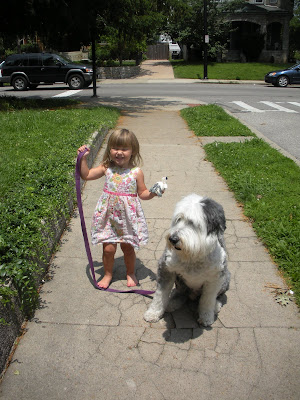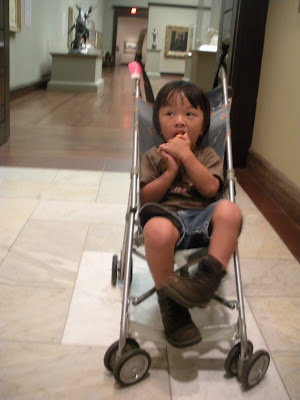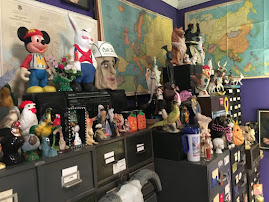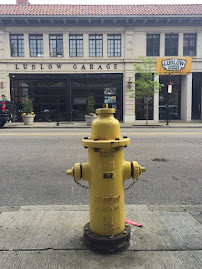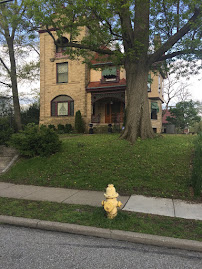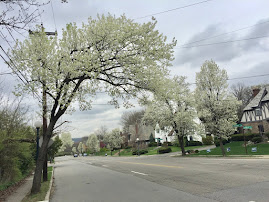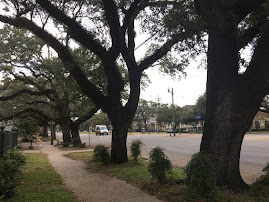
Electric Square, Menominee, Michigan
Dear George,
This posting is the third of three archives of “Menominee Postcards” that have previously appeared in the righthand column of this blog. I’ve changed the Menominee postcard images once a week since July 2009, and, because they aren’t otherwise stored on the blog, I’ve decided to save old ones here for a new viewer’s potential interest. To access Menominee Postcard archives #1 and #2, one should go to the list of “Labels” in the blog’s righthand column and click on “Archives”. There is also an archive of “Marinette Postcards” there (Menominee’s twin city across the river in Wisconsin), as well as an archive of our father’s family photos taken mainly in the Menominee area from the mid-1930’s to the 1950’s (“Vic’s Photos”). I’ll be adding further archives of each of these topics in the future.
Love,
Dave

CHERNEY’S FAMOUS HOMEMADE CONES
Cherney’s was before my time, but Menominee and Marinette were definitely ice cream centers in the 1940’s and 50’s. The Ideal Dairy, whose ice cream cones cost two dips for a nickel, was on Highway 577 on our way home to our family’s house on the Menominee River, and the Producer’s Dairy was a few blocks up Sheridan Road from my grade school. When I worked at the Marinette drugstore I was in charge of making ice cream cones at the soda fountain for the neighborhood kids, and I’d make them for myself as well. My most thrilling childhood memory was when our father would take my siblings and I to the Menominee drugstore after hours and let us create and eat whatever sort of sundaes we wanted. A fantasy dream come true.

COMMERCIAL BANK
The white building with the tall columns is the Commercial Bank, one of two bank in downtown Menominee and our family bank when I was growing up. I had a savings account there as a grade schooler and bought Xmas club stamps at school each week for a nickel or dime which were then saved in the bank. Later I deposited portions of my drugstore salary checks at the Commercial Bank and accumulated $600 by the time I went off to college. I never learned to be much of a money manager, though the Commercial Bank tried to do its best for its children customers.

NORTHWESTERN FARMER
This is the office of the Northwestern Farmer, a newspaper publication based in Menominee. Past issues are currently available on microfilm from Michigan Tech for 1907-8. The photo is of interest because my dad was born in the twin cities in 1908, and it’s likely that my grandparents, as local business people, would have been aware of the firm and the publication. It looks like really old times in Menominee.

DEER YARD AT HENES PARK
Henes Park was (and is) a community treasure. It’s located on the Green Bay shore, just off M-35, and offers a bathing beach, picnic areas, and its own mini-zoo. The deer pen has deer and buffalo co-existing, and we were always amazed as children that buffalo, which we associated with the Wild West, actually lived in Menominee.

ICE BERG, GREEN BAY
When we moved to Cincinnati, we found the winters unimpressive. Moderate temperatures, occasional snowfalls that quickly turned grey and speckled from air pollution, and sidewalks covered in slush. Upper Michigan and Wisconsin had much more real winters. While the ice floes in this postcard image were undoubtedly at their peak, the Green Bay shore would become lined with miniature mountains of ice each winter, and we children would climb around on them like arctic adventurers.

MENOMINEE HIGH SCHOOL
I have lots of rich memories of Menominee High because of friends, classes, teachers, activities, sports, and silly happenings. I was pretty much a good student, participated in the class plays, won a letter on the varsity tennis team, and was on various student councils and similar bodies. When I went off to Antioch College, my classmates were from much larger and more sophisticated schools in New York, Chicago, Philadelphia, etc. But, despite my being the only Antioch student in history from the U.P., MHS had prepared me well enough that I survived my freshman year and beyond.

VICTORY BEACH
This is one of the parks on Sheridan Road just north of downtown Menominee. It’s on the Green Bay shore. Uncle Kent, Aunt Millie, and my cousins lived across the street from Victory Beach, and I’d pass by it each day on the way to school. Despite its name, Victory didn’t have a swimming beach, so we didn’t hang out there.

PAPER MILL By the time I was born the logging boom in the Menominee-Marinette area had been long gone, but paper production remained one of the towns’ main industries. One of the paper mills was right next to the Hattie Street bridge over the Menominee River, and I would ride my bike past it each day on my way to work at the Marinette drugstore.

SHERIDAN ROAD Sheridan Road, pictured here, is one of the two major streets in Menominee, running along the Green Bay Shore from the Menekaunee Bridge to the northern side of town at the opposite end. Our family lived on Sheridan road while I was in grade school, first in a house toward the north end of the street, then in a second-floor apartment downtown during the war. Some of my friends who lived on this street included Jimmy Jorgenson, Sally Henes, Marvin Forton, Sammy Wells, Hal Rosene, Wally Jones, Peter and Dinah Johnson, and my cousins, Thor, Kurt, and Stewart. Important places on Sheridan Road included the Producers’ Dairy, the Silver Cream Brewery, our family physician Dr. Sethney, my dad’s law office, my grandfather’s Menominee Drug Store, the town’s two banks, the Montgomery Ward department store, the police department, Van’s Bar, the GI Surplus Store, our dentist Dr. Mead, the Five and Dime, the Spies Public Library, the Lloyd Movie Theater, Reindl’s Restaurant, the Marathon Paper Mill, the Carpenter Cook building and docks, a gas station, the Marina and Bandshell, the Vogue women’s clothing store, and a bunch of other shops. This was clearly the main drag in Menominee.

FERNSTRUM BOILER WORKS
The Fernstrum Boiler Works was down toward the west end of Ogden Avenue, about halfway between my friend Sally Fernstrum’s and our family’s two-story house and Boswell Grade School. Sally and I attended kindergarten at Boswell. On our half-mile winter walks to school, Sally and I would stop each morning at the Boiler Works where we warmed our hands and feet at the potbelly stove in the office and replenished ourselves for the second half of our harsh and challenging kid journey.

MENOMINEE DRUG STORE
My grandfather founded drug stores in Marinette and Menominee. When he retired he gave the Menominee store to my Uncle Kent who was also a pharmacist. The drug store was a half block away from Washington Grade School, so I spent a lot of lunch hour and after school time there, catching up on all the newly published comic books for the week. Kent’s fellow pharmacist Lucien always told me to enjoy my current childhood age because it only gets worse as you grow older. Lucien’s advice made a big impression on me, though I’m still not convinced he was right.

AERIAL OF DOWNTOWN MENOMINEE (circa 1940)
This is downtown Menominee, with the breakwater extending out into Green Bay and the picture centered on Electric Square, the hub of the business district. VAL Sr.’s drugstore was in the building in the foreground, and the First National Bank is just behind it. The Carpenter Cook (grocery distributor) Building is at the front right. We lived up the street (to the left) on Sheridan Road for several years during my childhood, and my daily walks to and from Washington Grade School took me through this intersection for what now seems like thousands of times.

BANDSHELL
The bandshell is in Marina Park opposite the police station on First Street and on the shoreline of the Green Bay marina. My strongest personal association with the bandshell came from adulthood when my dad was one of the people instrumental in establishing a summer music series at the bandshell. When we’d come home for family reunions each August, we’d regularly take in a concert there at the Waterfront Festival.

HENES PARK
We spent a lot of time at Henes Park as kids. Located on Green Bay with forested hiking trails, it was Menominee’s best known landmark. The O’Hara’s summer cottage was an eighth of a mile north on M-35, so we’d walk down to the park along the beach. There was a large buffalo and deer pen and, years later, a tiny “zoo” containing a black bear, raccoons, and other local animals in small barred cages. The children’s playground was our favorite spot, with swings, a tall slide and a smaller slide, a teeter-totter, and a merry-go-round type apparatus that you ran around and pushed to get started, then jumped onto. As teens, we picnicked at Henes Park, played softball, and swam at the beach. Years later Katja and I always took J to Henes Park on our family vacations home.

JUNIOR HIGH SCHOOL
Menominee High School had two buildings, one for junior high and one for senior high. Making the transition from sixth grade at Washington Grade School to junior high was a major life event, e.g., shifting from the top of the pack to the bottom of the pack, a sequential role change which was to be repeated throughout life in various ways. I spent half of each school day in the 7th grade in a “core” class under the tutelage of Mr. Robare who was young, thin, had a crewcut, wore glasses, and had a funny sense of humor. I became good friends with Sally H. and Bob A. in Mr. Robare’s class, and we are still good friends to this day, though our reunions are infrequent.

GRANT SCHOOL There were four public elementary schools in Menominee, as well as a parochial school, St. John’s. Boswell was on the west side of the city, and Sally Fernstrum and I went there for kindergarten. Our family then moved to Sheridan Road, and I attended Washington which was in the southeast quadrant of the city. Roosevelt was south-central, and Grant School served northern Menominee. All of these were feeder schools for Menominee High School, and, when I moved on to seventh grade, I soon developed many of my friendships with kids from Grant School, i.e., Bob A., Sonny K., Bob R., John F, Eugene B., and Bob G. We played touch football on the high school lawn during Autumn lunch hours, then shifted to lunchtime basketball in the winter. By the time this photo was taken, Grant had shut down, as had Washington Grade School (which looked just like Grant), and a big new elementary school had been built by the airport.

POST OFFICE
Toward the end of World War II my mother, my brother Steven, and I lived in a second-floor apartment just two doors east of the Post Office. Every month or so my mother would send me there to buy some stamps, and it made me feel very grown-up.

OGDEN AVENUE
This is a view of 10th Avenue (formerly Ogden Ave.) shortly after one comes off the Interstate Bridge and heads east toward downtown Menominee. Ogden Ave. and Sheridan Rd. are the town’s two major streets. This postcard was published in the 1970’s. On the opening day of Taco Bell (pictured at the right) my parents and a group of their 60-something friends had a party there to spoof the fast food chain’s arrival in the wilds of the north. As it happened, my mom became a great fan of Taco Bell salads, and my father would regularly pick up a takeout order for her lunch.
G-Mail Comments
-John Y (6-20): Just stumbled across your blog today. Exceptional. I haven’t read all of the blog yet, but I got a big hoot and a lot of nostalgia from what I’ve read so far. Re the “Aerial View of Downtown Menominee” I think that’s the Spies Building not the Carpenter Cook Warehouse which was down by the Menominee Paper Mill by Dormer Fish Company…. Will write more later after I’ve explored the entire blog. John
-Wayne M (6-20): Hi, Wayne M***, class of 57 here. I just wanted to tell you how great your blog is. Sure brings back some memories of the greatest place in the world to grow up. While reading the information under the photo of the boarded up Grant elementary school I thought I would just recall from my deteriorating memory the following. There were eight elementary schools in Menominee. I noticed this because Lincoln wasn't mentioned. Lincoln and Roosevelt were identical in construction. It was located on the corner of 14th street and 28th avenue. The other two schools were parochial, St. Ann's and Epiphany. I remember this because we had an eight team rotation for grade school football and basketball. What wonderful memories!! I had Mr. Robare for 7th grade core also. The thing I remember about him was the yogi. He would walk up behind a person who was goofing off and with the center knuckle extended, bonk you on the head. Thanks for sharing. Wayne























